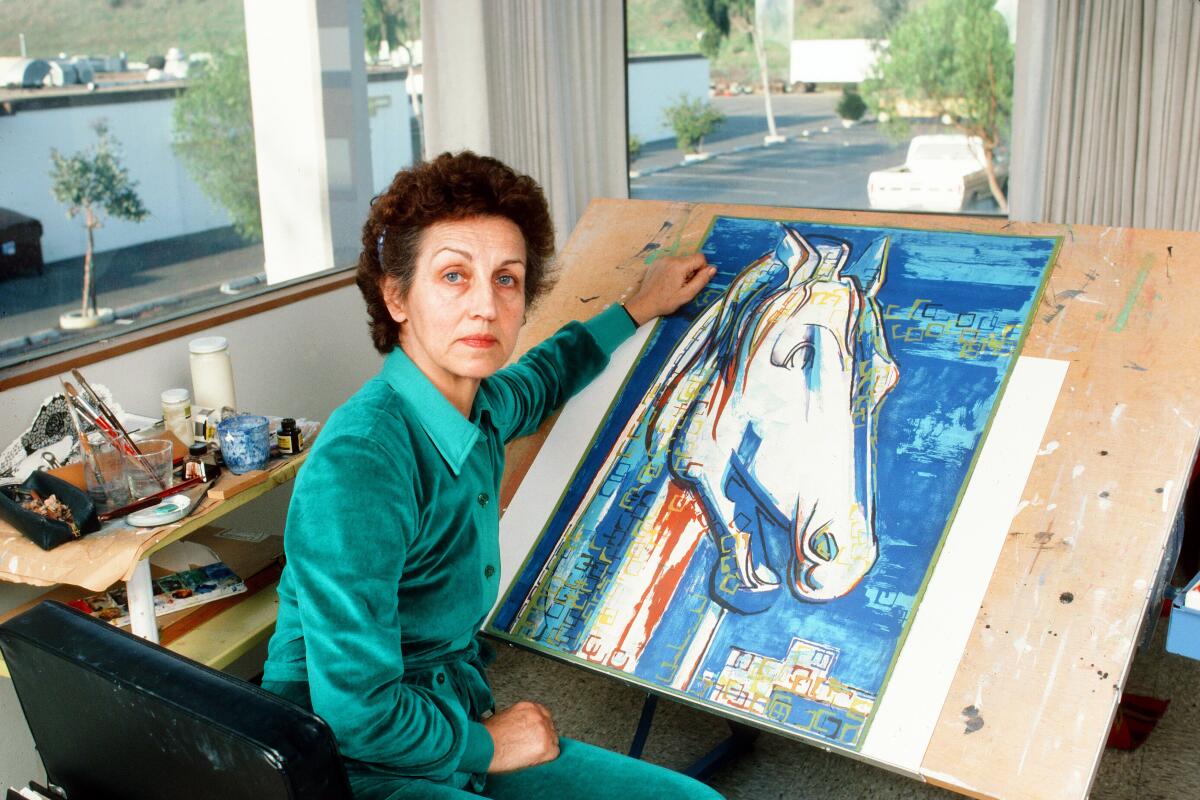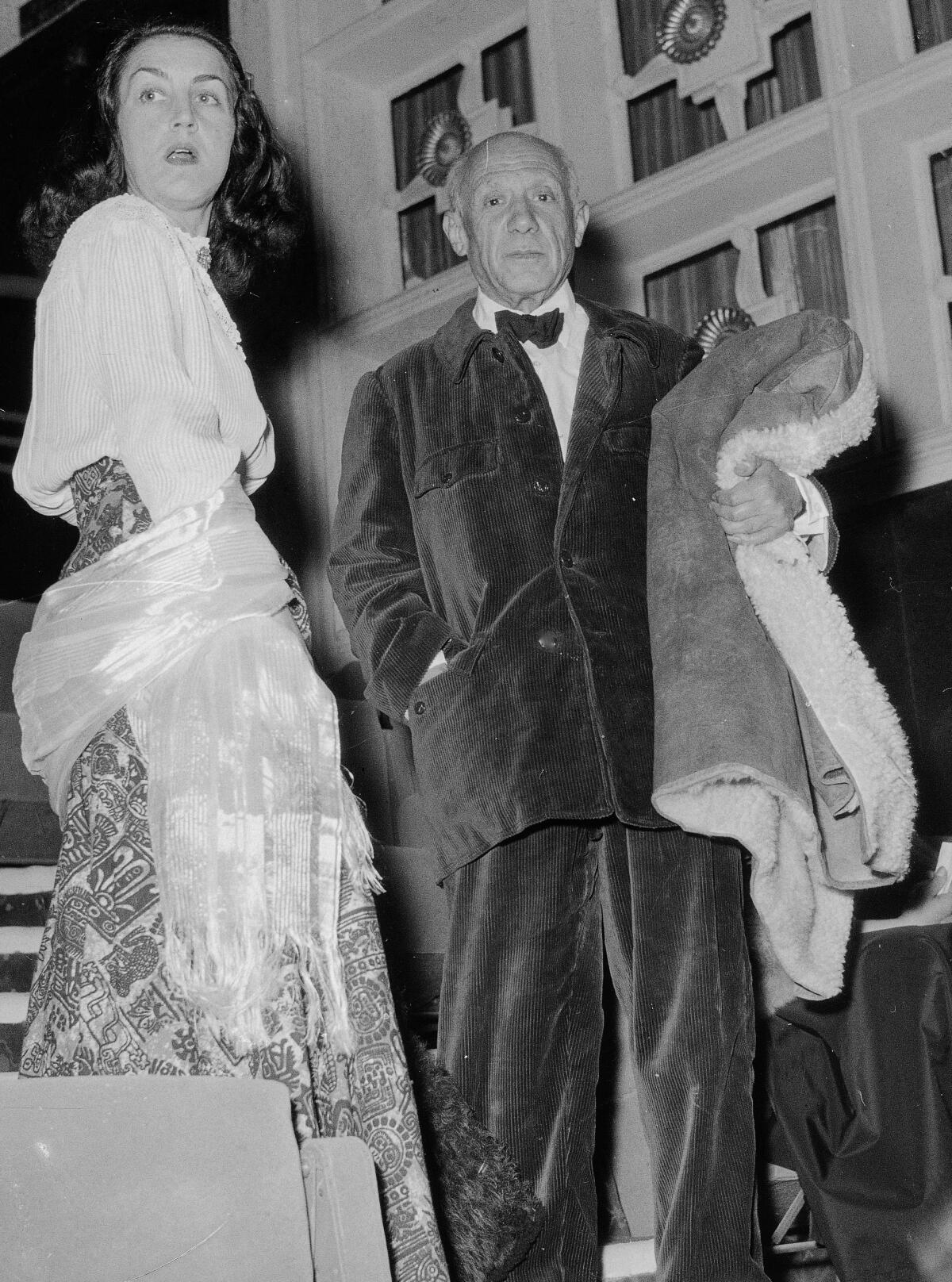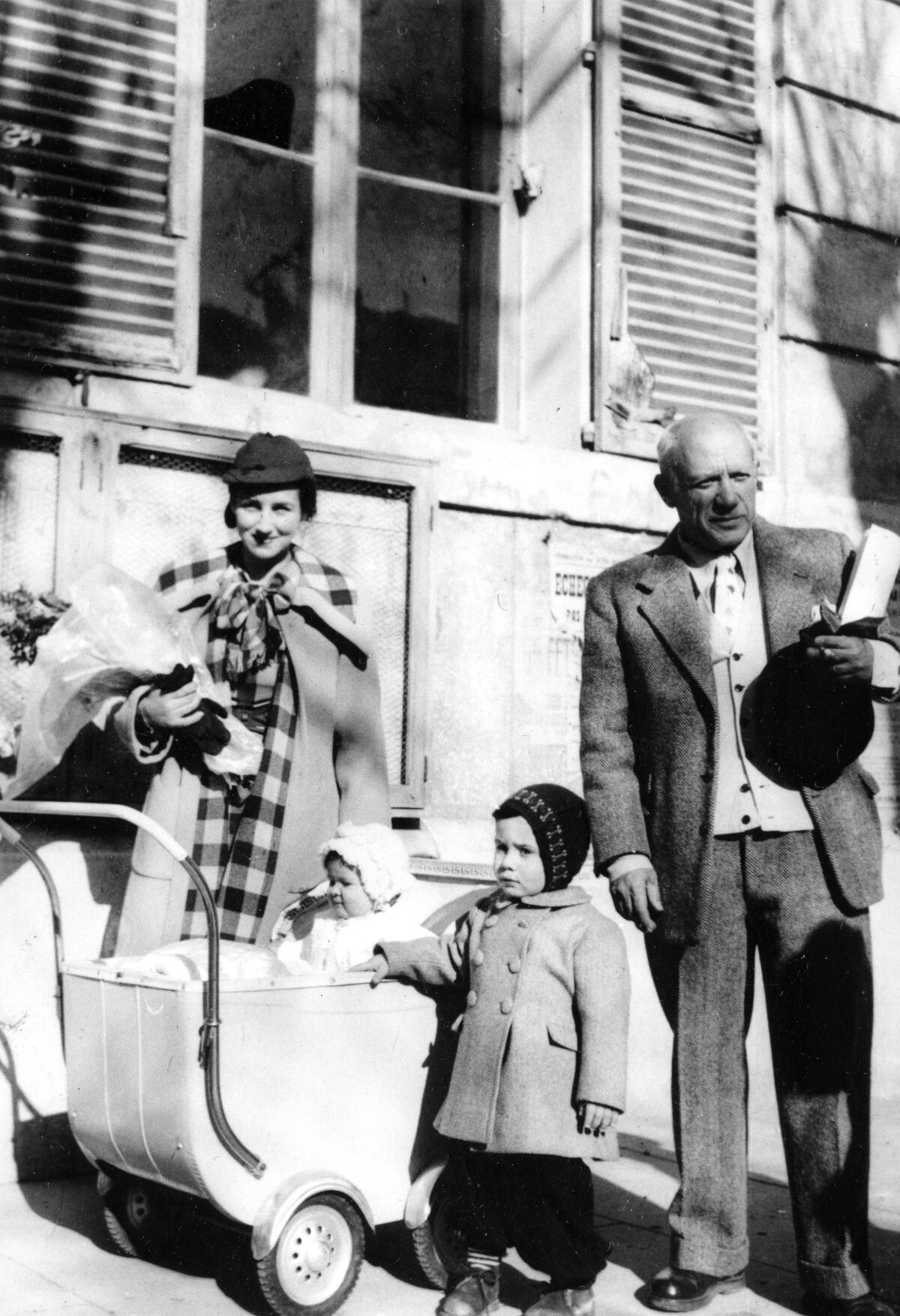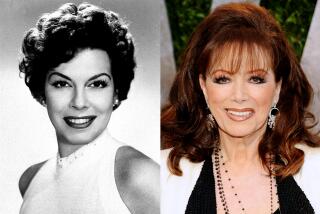Françoise Gilot, French painter who inspired then left Picasso, dead at 101

Françoise Gilot, a prolific and acclaimed painter who produced art for more than a half-century but was nonetheless more famous for her turbulent relationship with Pablo Picasso â and for leaving him â died Tuesday in New York City, where she had lived for decades. She was 101.
Gilotâs daughter, Aurelia Engel, said her mother had been suffering from both lung and heart problems. âShe was an extremely talented artist, and we will be working on her legacy and the incredible paintings and works she is leaving us with,â Engel said.
The French-born Gilot had long made her frustration clear that despite acclaim for her art, which she produced from her teenage years until five years ago, she would still be best known for her relationship with the older and more famous Picasso, whom she met in 1943 at age 21, his junior by four decades.
The union produced two children â Claude and Paloma Picasso. But unlike the other key women in Picassoâs life â wives or paramours â Gilot eventually walked out.
âHe never saw it coming,â Engel said of her motherâs departure. âShe was there because she loved him and because she really believed in that incredible passion of art which they both shared. (But) she came as a free, though very, very young, but very independent person.â
Gilot herself told the Guardian newspaper in 2016 that âI was not a prisonerâ in the relationship.
âIâd been there of my own will, and I left of my own will,â she said, then 94. âThatâs what I told him once, before I left. I said: âWatch out, because I came when I wanted to, but I will leave when I want.â He said, âNobody leaves a man like me.â I said, âWeâll see.â â
Gilot wrote several books, the most famous of which was âLife With Picasso,â written in 1964 with Carlton Lake. An angry Picasso sought unsuccessfully to ban its publication.
âHe attacked her in court, and he lost three times,â said Engel. âAfter the third loss he called her and said congratulations. He fought it, but at the same time, I think he was proud to have been with a woman who had such guts like he had.â
Born on Nov. 26, 1921, in leafy Neuilly-sur-Seine in suburban Paris, Gilot was an only child. âShe knew at the age of 5 that she wanted to be a painter,â Engel said. In accordance with her parentsâ wishes, she studied law, however, while maintaining art as her true passion. She first exhibited her paintings in 1943.

That was the year she met Picasso, by chance, when she and a friend visited a restaurant on the Left Bank, amid a gathering that included his then-companion, Dora Maar.
âI was 21 and I felt that painting was already my whole life,â she wrote in âLife With Picasso.â When Picasso asked Gilot and her friend what they did, the friend responded that they were painters, to which Picasso responded, âThatâs the funniest thing Iâve heard all day. Girls who look like that canât be painters.â The two were invited to visit Picasso in his studio, and the relationship soon began.
Not long after leaving Picasso in 1953, Gilot reunited with a former friend, artist Luc Simon, and married him in 1955. The had a daughter â Engel â and divorced in 1962. In 1970, Gilot married Jonas Salk, the American virologist and researcher famed for his work with the polio vaccine, and began living between San Diego and Paris, and later New York.
Her art only increased in value over the years. In 2021 her âPaloma Ă la Guitareâ (1965) sold for $1.3 million at a Sothebyâs auction. Her work has been shown in many prominent museums, including the Metropolitan Museum of Art and the Museum of Modern Art. Her life with Picasso was illustrated in the 1996 movie âSurviving Picasso,â directed by James Ivory.

Engel noted that although the relationship with Picasso was clearly a difficult one, it gave her mother a certain freedom from her parents and the constraints of a bourgeois life â and perhaps enabled her to pursue her true dream of being a professional painter, a passion she shared with Picasso above all else.
âThey both believed that art was the only thing in life worth doing,â she said. âAnd she was able to be her true self, even though it was not an easy life with him. But still she was able to be her true self.â
And for Engel, her motherâs key legacy was not only her creativity but her courage, which was reflected in her art, which was always changing, never staying safe.
âShe was not without fear. But she would always confront her fears and jump in the void and take risks, no matter what,â Engel said.
More to Read
The biggest entertainment stories
Get our big stories about Hollywood, film, television, music, arts, culture and more right in your inbox as soon as they publish.
You may occasionally receive promotional content from the Los Angeles Times.










